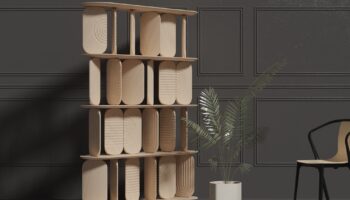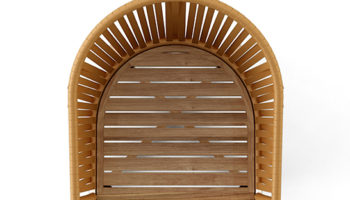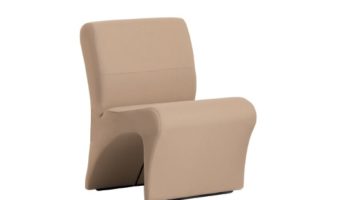Portable Bookshelf by Swedese
The Spring thaw may be nigh, but having just witnessed the exciting conclusion of the 21st. Olympiad, in addition to recently experiencing a surprisingly vicious snow and ice storm in our current environs of Asheville, North Carolina, I’ve still got winter on the brain–putting me in mind of Scandinavian furniture, of course. So here’s a Swedish manufacturer to rival the likes of earlier standouts like Vauni and Bolon—Swedese, ” a classic Swedish furniture producer whose ideals are the same today as they have been for the past sixty years… to create beautiful furniture for the future that builds on the foundations of Scandinavian modern traditions.” As exemplified, for instance, in Swedese Libri by designer Michael Bihain. It’s a modular bookshelf of sorts, clean and geometrical in the best Scandinavian tradition, yet eminently adaptable to the frequent flux of contemporary life.
Swedese Libri. Designed by Michael Bihain for Swedese.
Libri is all about simplicity, as in minimization and consistency of materials, maximal utility and portability, and ease of assembly. Joining the ranks of other pieces that obviate installation (I’m reminded of recent entries Bibliochaise and Steckbar), Libri’s singular coup is the subtle change in the depth of ascending shelves. This means that the upper shelves project out while the lower shelves project in, thus creating an array of ultra-stable shelf-to-wall contact points that lets you lean Libri securely. Filling the shelves with your favorite tomes only makes the bookcase that much more stable.
While this singular ingenuity would be sufficient to distinguish the piece as an excellent example of modular design, Libri’s attributes only begin with its “lean-ability.” Other enviable qualities include a front to back bracketing option, creating a triangular configuration that works as a freestanding number; a front-to-front arrangement, which results in a “tilted” set-up that can also function as a room divider; adjustable telescoping legs that render it that much more adaptable to the “wavy floor” syndrome so common to “vintage” architecture; and a choice of colors and finishes in ash wood in white or black lazur.
Via NOTCOT.







Leave a Reply